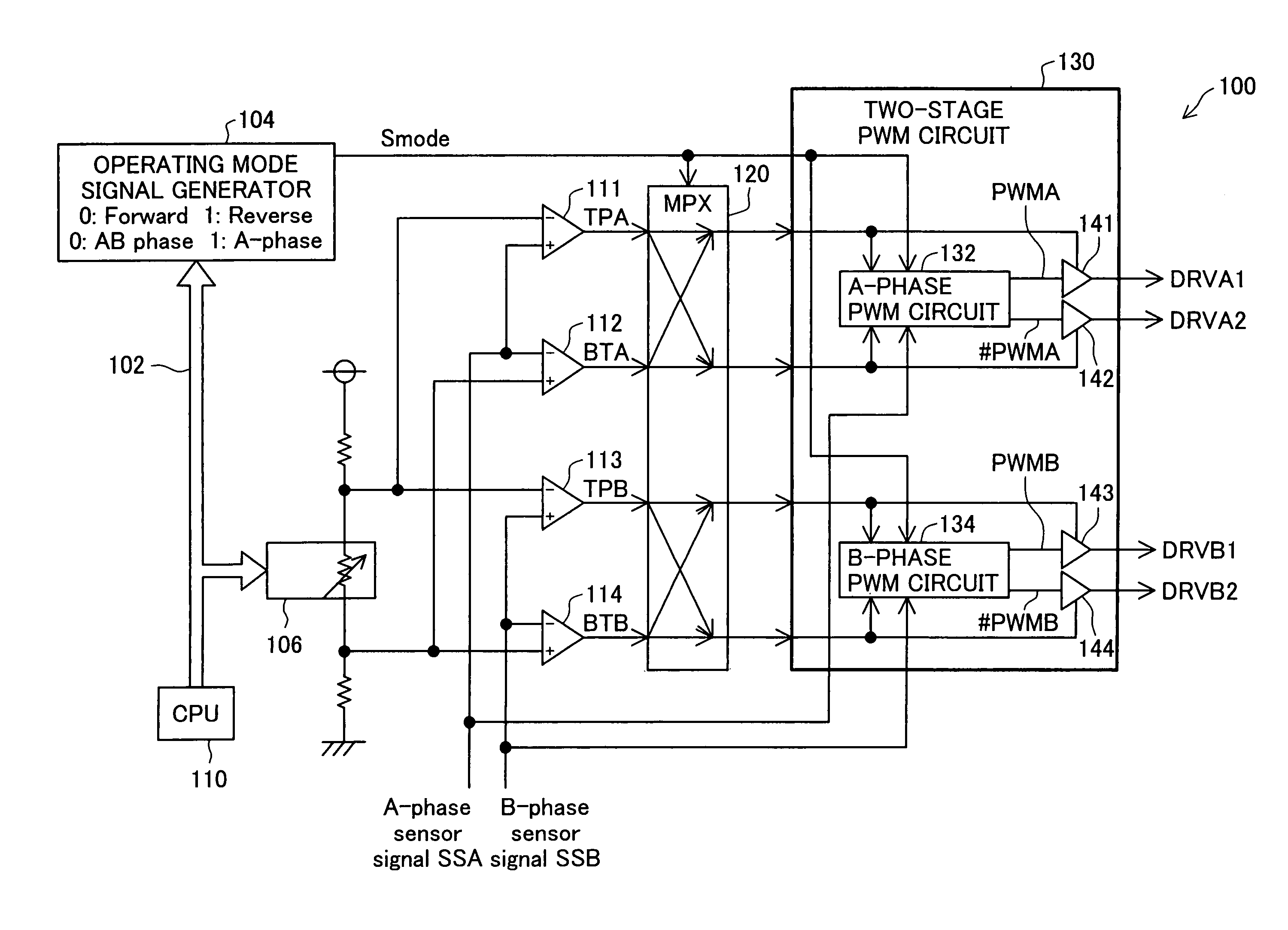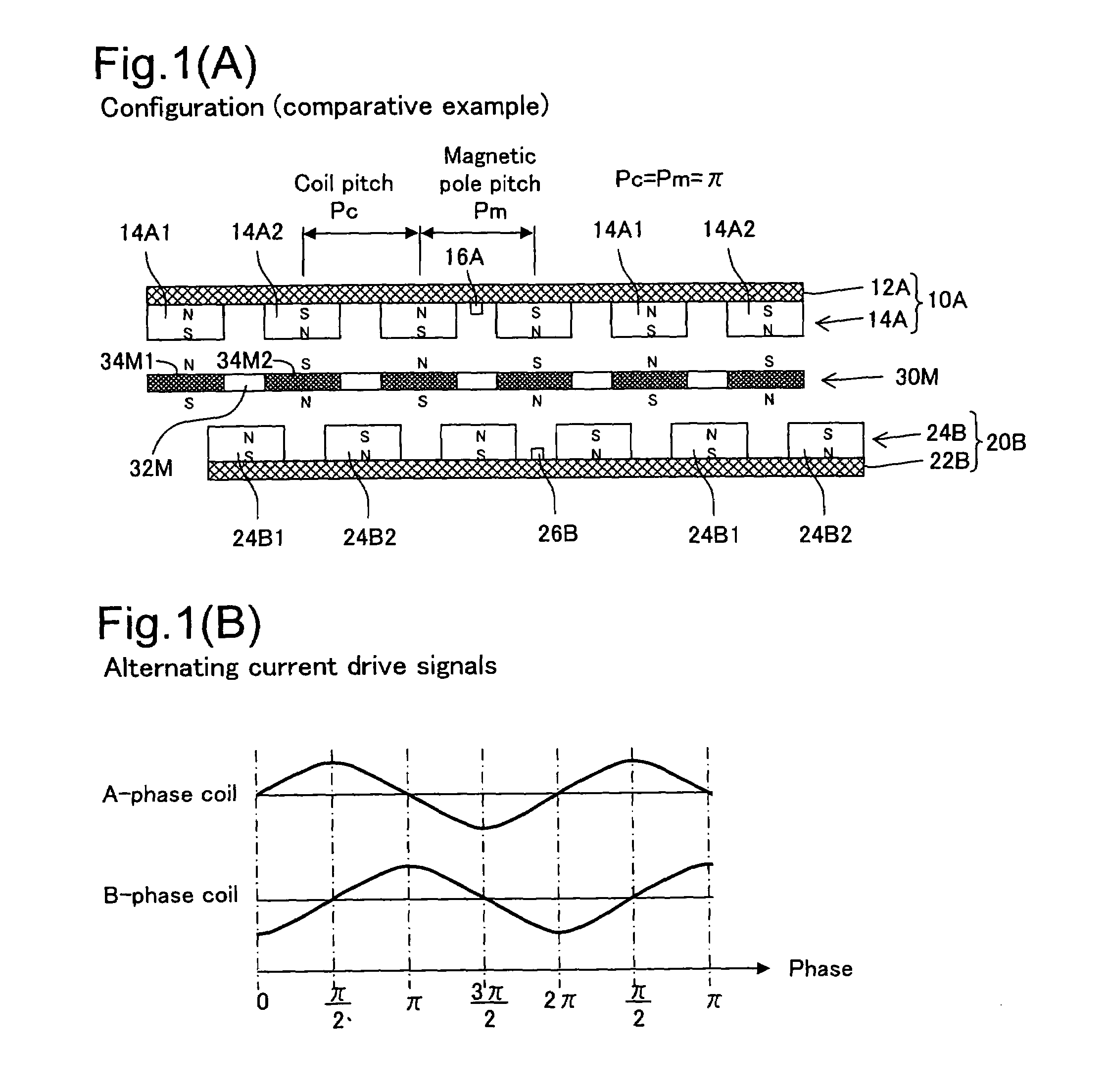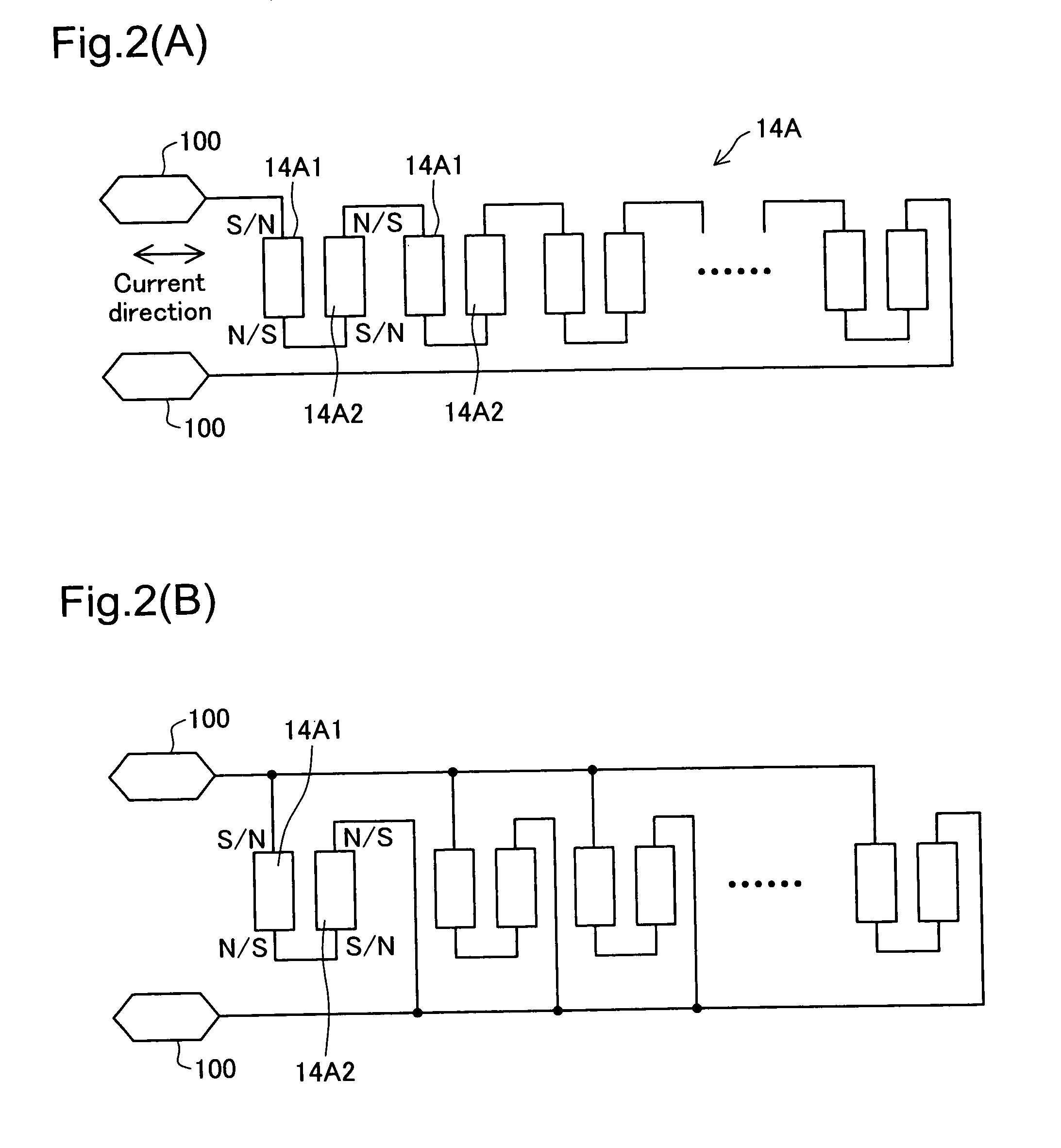Motor
a motor and motor technology, applied in the direction of dynamo-electric converter control, electric controller, magnetic circuit shape/form/construction, etc., can solve the problems of motor weight increase, significant worsening of torque and weight ratio, and inability to operate, so as to increase the efficiency of electric machines
- Summary
- Abstract
- Description
- Claims
- Application Information
AI Technical Summary
Benefits of technology
Problems solved by technology
Method used
Image
Examples
first embodiment (
B. First Embodiment (Two-Phase Motor)
B-1. Schematic Structure of the First Embodiment
[0082]FIG. 4 (A) is an explanatory drawing showing the schematic structure of the electric motor of the first embodiment of the present invention. This electric motor comprises a first coil group structure 40AB, a second coil group structure 50AB, and a magnet group structure 30M.
[0083]The first coil group structure 40AB comprises a support member 42, an A-phase sub coil group 14A, and a B-phase sub coil group 24B. Note that with FIG. 4 (A), for convenience of illustration, the coils of the A-phase sub coil group are drawn with a solid line, and the coils of the B-phase sub coil group are drawn with a dotted line.
[0084]The A-phase sub coil group 14A has two types of reverse direction magnetized coils 14A1 and 14A2 arranged alternately at a fixed pitch. The B-phase sub coil group 24B similarly has two types of reverse direction magnetized coils 24B1 and 24B2 arranged alternately at a fixed pitch. The...
second embodiment (
F. Second Embodiment (Three-Phase Motor)
[0154]FIGS. 26 (A) to 26 (C) are explanatory drawings showing the schematic structure of the electric motor of the second embodiment of the present invention. The motor of this third embodiment is a three-phase motor comprising three sub coil groups for A-phase, B-phase, and C-phase. The magnet group structure 30M has the same structure as that of the first embodiment shown in FIG. 4 (A). A first coil group 40ABC and a second coil group 50ABC are provided at opposite sides across the magnet group structure 30M. The first coil group structure 40ABC has repeated arrangement of coil 91A1 of the A-phase sub coil group, coil 92B1 of the B-phase sub coil group, and coil 93C1 of the C-phase sub coil group. Note that in FIGS. 26 (A) to 26 (C), for convenience of illustration, the coils of the A-phase sub coil group are drawn with a solid line, the coils of the B-phase sub coil group are drawn with a dotted line, and the coils of the C-phase sub coil g...
third embodiment (
G. Third Embodiment (Four-Phase Motor)
[0166]FIGS. 31 (A) to 31 (D) are explanatory drawings showing the schematic structure and the operation of the electric motor of the third embodiment of the present invention. The motor of this third embodiment is a four-phase motor comprising four sub coil groups for the A-phase, B-phase, C-phase, and D-phase. The magnet group structure 30M has the same structure as that of the first embodiment shown in FIG. 4 (A). A first coil group 40ABCD and a second coil group 50ABCD are provided at opposite sides across the magnet group structure 30M. The first coil group structure 40ABCD has coils 91A1 and 91A2 of the A-phase sub coil group, coils 92B1 and 92B2 of the B-phase sub coil group, coils 93C1 and 93C2 of the C-phase sub coil group, and coils 94D1 and 94D2 of the D-phase sub coil group, which are arranged in a specified sequence. Note that with FIGS. 31 (A) to 31 (D), for convenience of illustration, the A-phase sub coil group coils are drawn wit...
PUM
 Login to View More
Login to View More Abstract
Description
Claims
Application Information
 Login to View More
Login to View More - R&D
- Intellectual Property
- Life Sciences
- Materials
- Tech Scout
- Unparalleled Data Quality
- Higher Quality Content
- 60% Fewer Hallucinations
Browse by: Latest US Patents, China's latest patents, Technical Efficacy Thesaurus, Application Domain, Technology Topic, Popular Technical Reports.
© 2025 PatSnap. All rights reserved.Legal|Privacy policy|Modern Slavery Act Transparency Statement|Sitemap|About US| Contact US: help@patsnap.com



